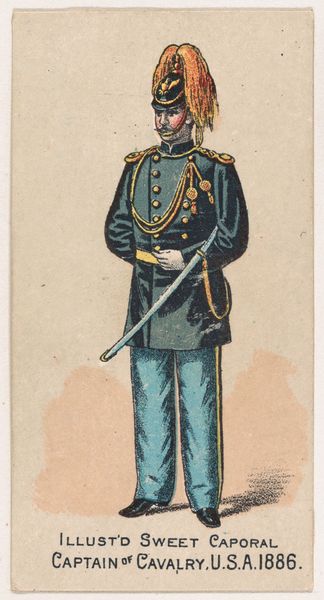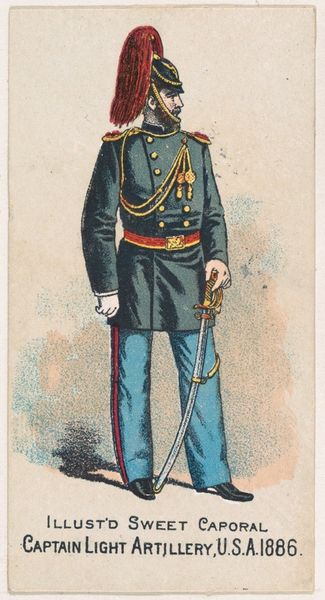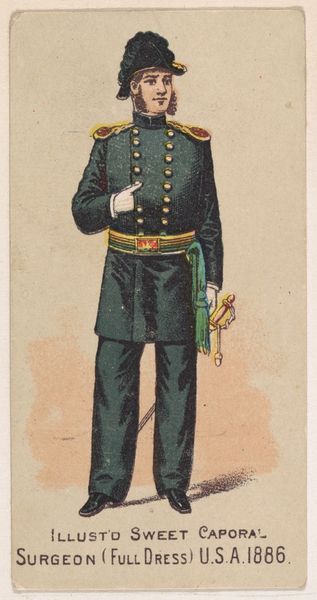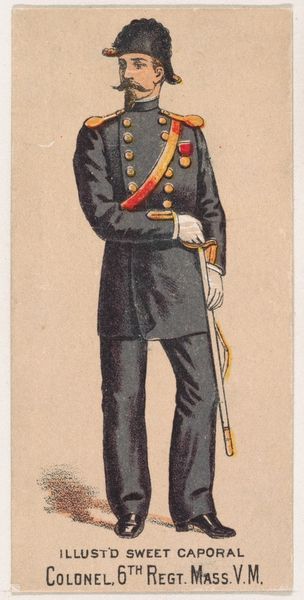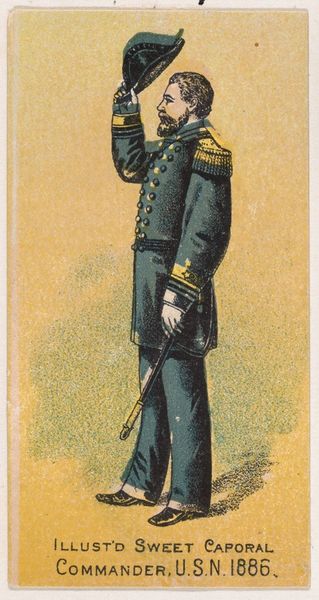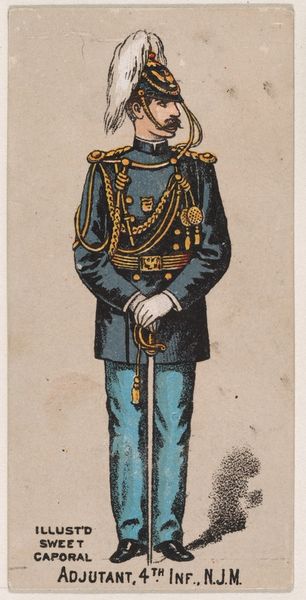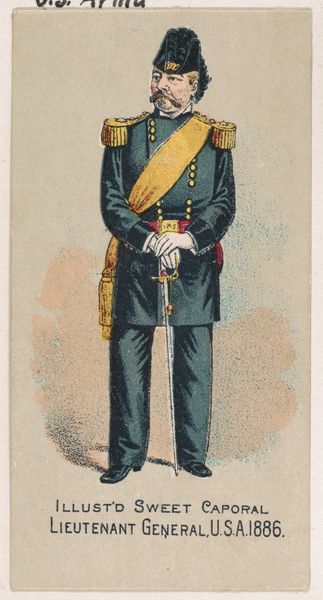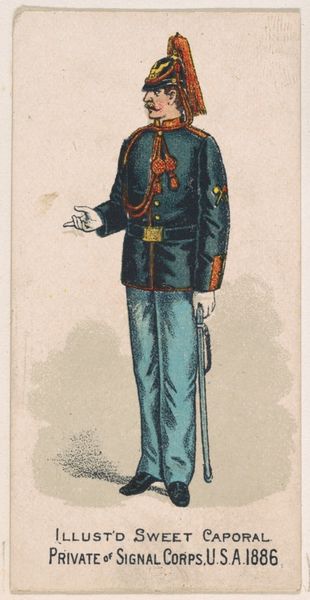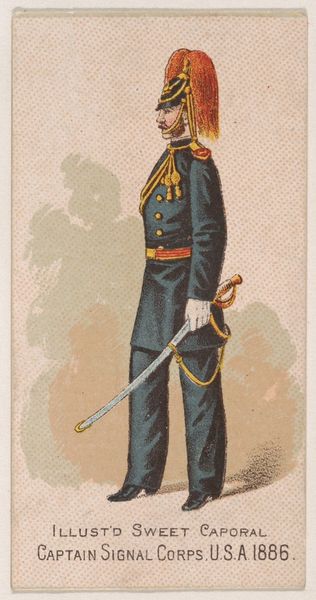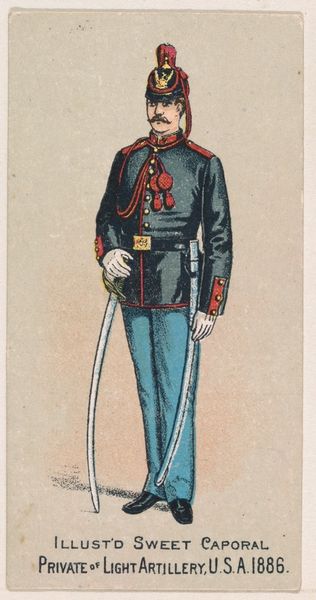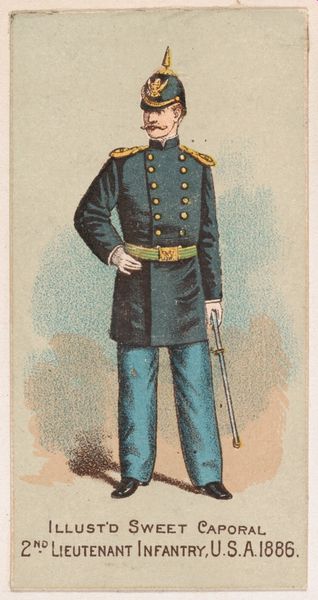
Major Infantry, United States Army, 1886, from the Military Series (N224) issued by Kinney Tobacco Company to promote Sweet Caporal Cigarettes 1888
0:00
0:00
drawing, lithograph, print
#
portrait
#
drawing
#
lithograph
# print
#
figuration
#
history-painting
#
academic-art
Dimensions: Sheet: 2 3/4 × 1 1/2 in. (7 × 3.8 cm)
Copyright: Public Domain
Curator: Here we have an intriguing lithograph, “Major Infantry, United States Army, 1886,” part of the Military Series created by the Kinney Tobacco Company around 1888. Editor: My first thought is how striking the figure is. He looks formal, almost rigidly so, despite the small scale of the print. Curator: It’s an advertisement, primarily, so it must make an immediate impression. Consider the period—these were distributed with Sweet Caporal Cigarettes. How does commerce shape visual representation here? Editor: It reflects the societal positioning of the military. The attention to detail, even in something so commercial, demonstrates the era’s reverence for authority. How is that masculinity constructed through uniform and accoutrements, and what narratives are intentionally or unintentionally conveyed through his posture? Curator: Right, the way military service becomes intertwined with ideals of American masculinity. And the date itself, 1886, puts it squarely within the Reconstruction era, where the image of a strong, unified army served certain political purposes. We might ask ourselves: who is being represented here, and who is excluded from that representation? Editor: Absolutely. Thinking about this lithograph within the visual culture of the time, you also see that these images helped craft and circulate national identity. The visual shorthand, the standardized imagery of the military figure, allowed for instant recognition and valorization of military ideals. Curator: It's also interesting to think about the act of collecting. These cards fostered a relationship between the consumer and the military. By collecting these figures, did smokers align themselves more closely with the nation’s project, buying into that image? Editor: Precisely! It transformed something mundane – smoking – into a symbolic act tied to broader national narratives. The idealized figure in the print obscures other potential narratives – the cost of conflict, for example. Curator: Yes, this seemingly innocuous little image speaks volumes about power, identity, and the pervasive role of advertising in shaping perceptions. Editor: A fascinating snapshot of a particular historical moment, skillfully manipulating imagery to influence public sentiment.
Comments
No comments
Be the first to comment and join the conversation on the ultimate creative platform.
